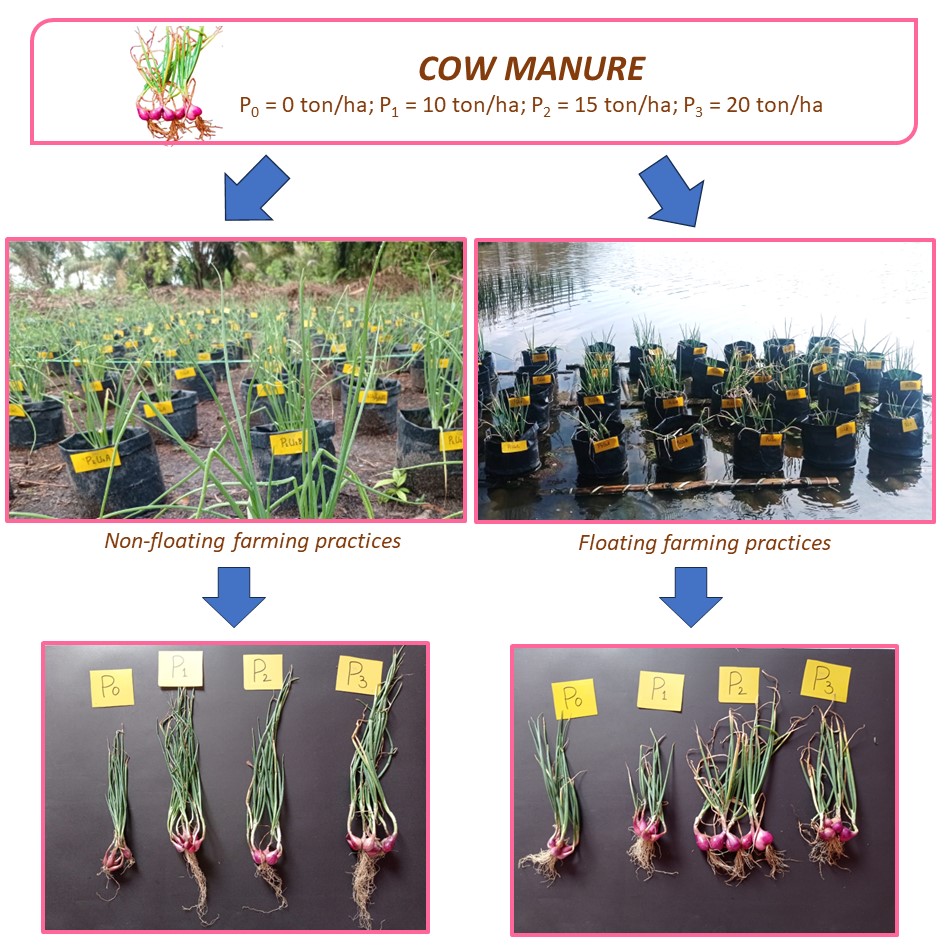Shallot cultivation in tropical climate ecosystems using floating and non-floating systems with different doses of cow manure

Published 2024-04-04
Keywords
- Fertilizer,
- raft,
- shallot bulb,
- swamp,
- yield
How to Cite
Copyright (c) 2024 Susilawati, Irmawati, Muhammad Umar Harun, Budiyati Ichwan

This work is licensed under a Creative Commons Attribution 4.0 International License.
Abstract
Deep swamp is swampland with the longest flooding period, making it challenging for crop cultivation. However, by adopting a floating system, this prolonged duration of flooding can be used for shallot growing. Thus, this study aimed to ascertain the growth and yield of shallots cultivated in polybags using conventional non-floating and floating systems with the application of different doses of cow manure. The research was located in the experimental field and reservoir of the Faculty of Agriculture, Sriwijaya University (3°13’30.3′′ S; 104°38’55.1” E). Non-floating and floating farming systems were utilized with the application of 0, 10, 15 and 20 ton/ha of cow manure. The findings demonstrated that shallots cultivated in the floating system had lower numbers and length of leaf but could produce more bulbs in comparison to the conventional method. The application of 15 ton/ha manure in the floating system resulted in higher weights of fresh and air-dried bulbs per plant, weighing 74.40 g and 64.82 g, respectively, compared to those in the non-floating system (46.77 g and 37.84 g, respectively). In conclusion, the Bima Brebes shallot variety potentially can be cultivated in a floating system with the application of 15 tons of cow manure per hectare.





